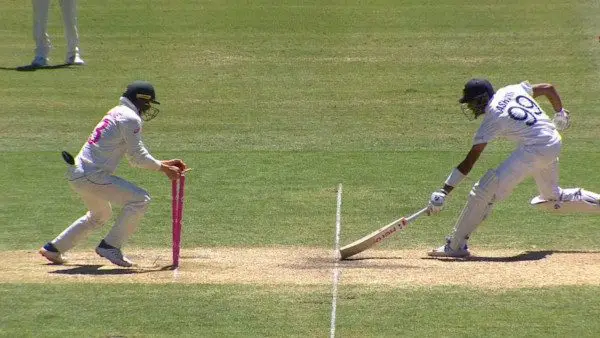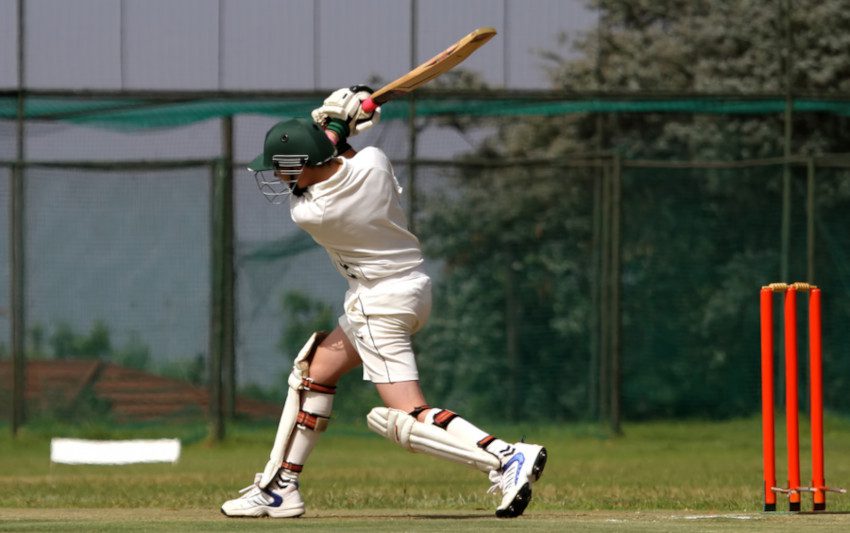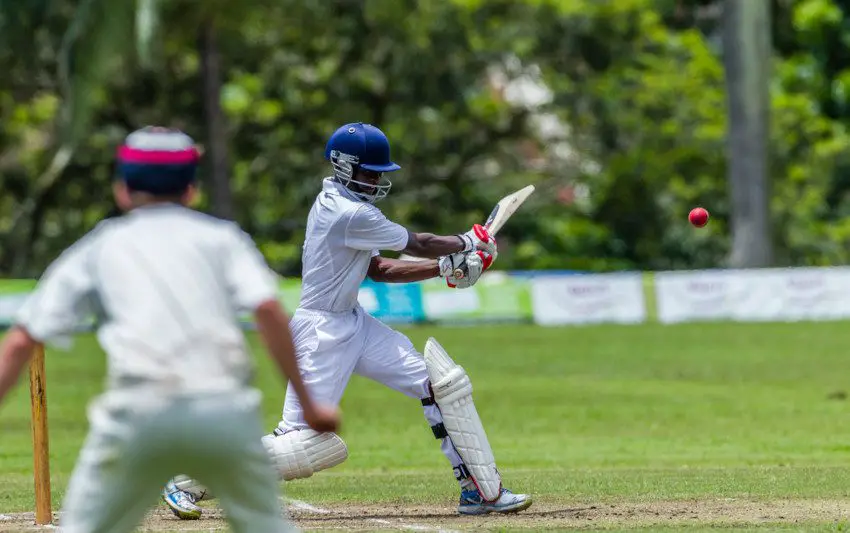Table of Contents
This is another important skill to learn: Running 22 yards might sound easy but you need to know how to judge a run and to get yourself prepared for a second, or even a third.
How to Decide Whether to Attempt a Run or Not
At times this will be obvious: The ball may be heading for the boundary with the fielder in pursuit. They are some distance away from the ball and there is enough time to set off for a run. Even the top professional cricketers manage to run out themselves, or their partners, but the skill of judging a run develops with experience.
When starting out, you shouldn’t run when the fielder has the ball in his or her hand. If they are on the boundary, you may have time but you should wait to assess whether or not that fielder has a strong arm.
As a beginner starting out, this is a tricky skill to master but the best piece of advice I can give you at this stage is to not run if there is any doubt at all.
How to Run Between the Wickets

Step 1 – Calling
Running between the wickets requires two people to be in sync with each other. Calling is the first, and possibly the most important step in the process. There are set calls that should be made and they should leave your batting partner in no doubt as to what they should do:
- Yes: There is a run available
- No: Stay in the crease – the fielder has collected the ball and you shouldn’t run
- Wait: Be ready to run: The ball is approaching a fielder but there could be a run if they do not collect it cleanly. Follow up a ‘wait’ call with a ‘yes’ or ‘no’.
In general, the batsman on strike should make the call if the ball travels in front of the wicket. If it goes behind the wicket, the non-striking batsman should make the call.
Step 2 – Setting Off
The first run should always be the fastest. A non-striking batsman should take a few steps once the bowler has released the ball while the striker has to change position after playing their shot.
If a run is available, both batters should get low, in the position of a sprinter. This offers the perfect base for setting off.
Step 3 – The Running Stride
Now you’ve set off and are about to hit the 22 yards long running stride. For the first half of the run, keep your head down and hold the bat across the body. Once we’ve completed that run, we need to see if a second is available.
For the second stage of the run, look up to see where the ball is in relation to the fielder. Start to extend your front arm so that you can slide the bat into the crease. At all stages take short, fast strides and aim to run in a straight line. Any deviation will mean that it takes longer to complete the run.
Step 4 – Grounding the Bat
We want to be able to take the opportunity to claim a second run if it’s available. Similarly, we want to make the crease as quickly as possible so this process needs to be really fast.
As you near the crease, extend your arms with the bat held out. Keep it as close to the ground as you can. Land the bat about a foot from the crease and slide it in, over the line.
Step 5 – Turning Back
If you are turning for a second run you will need to push off with your back leg. Once your bat is grounded beyond the crease, make that push which will give you a solid base. Turn sideways and face the direction of the ball.
Drop your hips and sink back in the crease which will help in lowering your centre of gravity. Push off with the back leg to give you power and follow the running steps as shown in the previous section.
How to Communicate with the Other Batsman
Communication with your batting partner should be clear and concise. There should only be those three calls – yes, no and wait.
Remember to keep up communication while in the process of running. As you pass each other on the wicket, you can make a yes or no call if it’s obvious at that point. If it’s not clear, wait until the run is completed. Running is a team effort and that communication begins when the ball is struck and that communication should continue once you set off.

Tips for Running Between Wickets
Those are the key steps to running between the wickets but what other advice can I give you?
This isn’t a part of the game that is widely practised but there is no reason why it shouldn’t be. If you are at school or in an outside training session, why not ask your coach to stage some scenarios where running and judging a run can be practised and developed?
- Trust Your Batting Partner: While I’ve underlined who should call and when, there may be instances where this is flexible. If either batter says ‘no’, it’s important to stay in the crease. Even if the other batsman feels that a run is achievable, one member of the partnership clearly isn’t ready and this is a scenario that is likely to lead to a run out.
- Never Give Up: Even if you’ve made a bad call and a run out seems likely, keep running as hard as you can. You never know when the fielder, bowler or wicket keeper will drop the ball and give you another chance.Giving up also gives the fielding side a general boost so it is best avoided in any match situation.
Follow the steps, keep those additional tips in mind and you should soon be more confident in terms of your running between the wickets.


